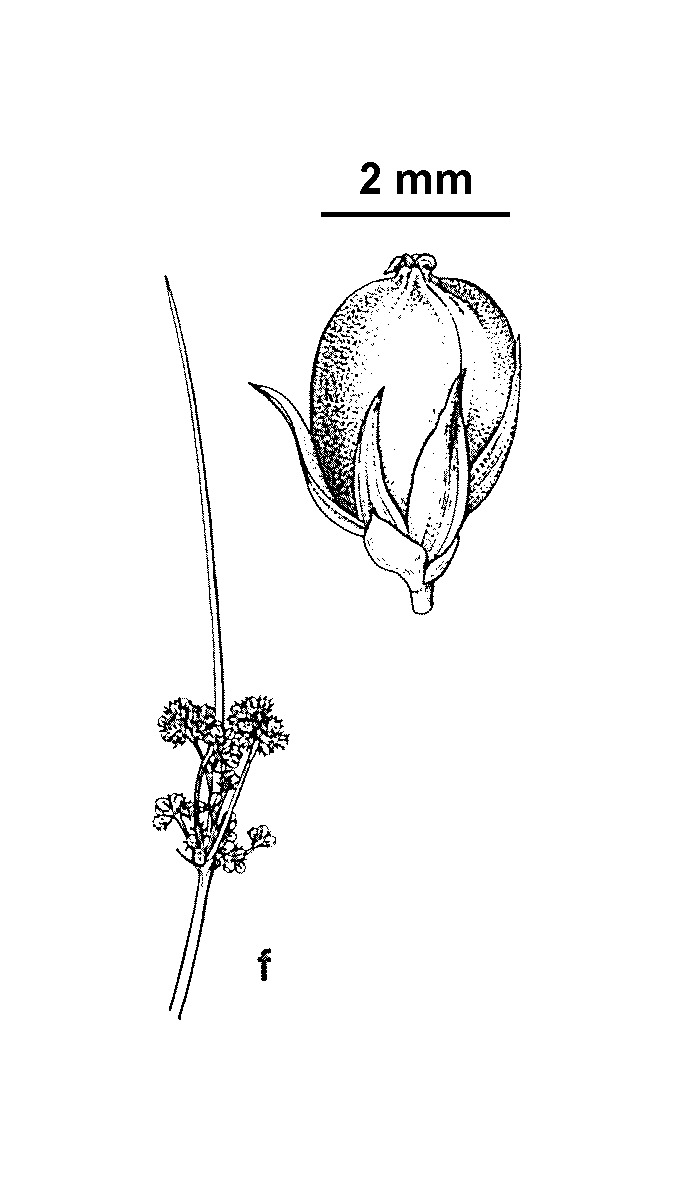Juncus bassianus
L.A.S.JohnsonDensely to loosely tufted perennial with horizontal or ascending rhizomes. Cataphylls reddish-brown towards the base, to 15 cm long. Culms erect, rigid, dull green, 60–100 cm high and 0.6–3.5 mm diam.; striations 30–50, not strongly raised; pith very dense, conspicuously white, continuous; stomates superficial. Inflorescence with flowers scattered or clustered; primary bract continuous with culm, to c. 13 cm long; prophylls present. Tepals stramineous or faintly reddish tinged, 1.9–3.0 mm long; stamens 3 (rarely 4 or 5), anthers c. 0.4–0.7 mm long. Capsules exceeding the tepals, brown apically, 2.2–2.6 mm long. Flowers and fruits recorded in Jan. and Feb.
VVP, OtR. Also Tas. Of very restricted distribution in Victoria, being known from roadsides in wet sclerophyll forest in the Otway Range.
Closely resembling J. alexandri subsp. alexandri, differing principally in the characters provided in the key. In addition, when J. bassianus culms are examined in transverse section, the epidermal cells of the striations are not radially elongated, whereas in J. alexandri they are. A few specimens of J. gregiflorus (e.g. from the Otway Range and Lake Mountain) have unusually dense pith and closely resemble J. bassianus. However, such specimens always have at least partially interrupted pith and softer, more easily compressed culms.
Albrecht, D.E. (1994). Juncus. In: Walsh, N.G.; Entwisle, T.J., Flora of Victoria Vol. 2, Ferns and Allied Plants, Conifers and Monocotyledons, pp. 197–233. Inkata Press, Melbourne.
 Spinning
Spinning